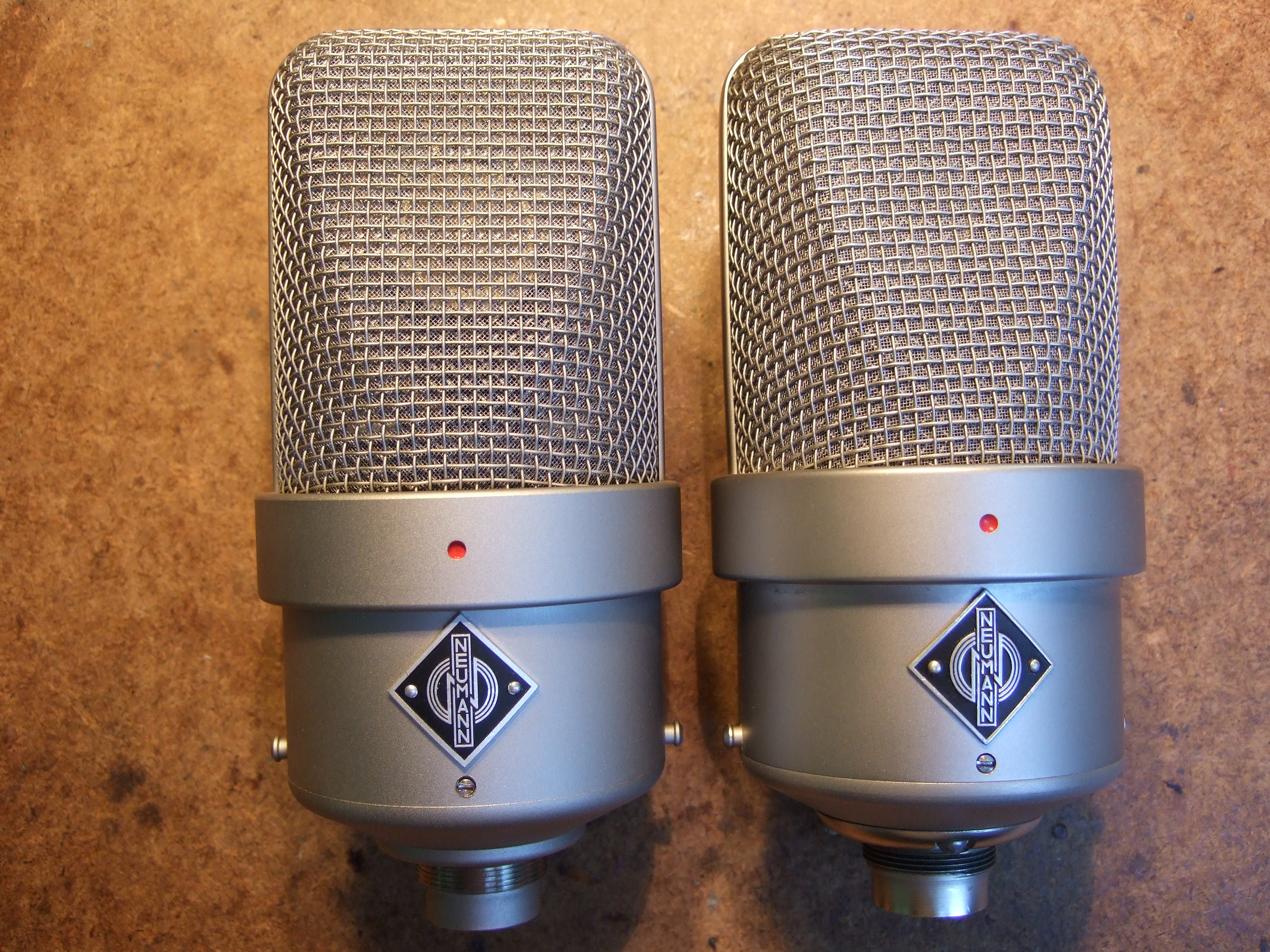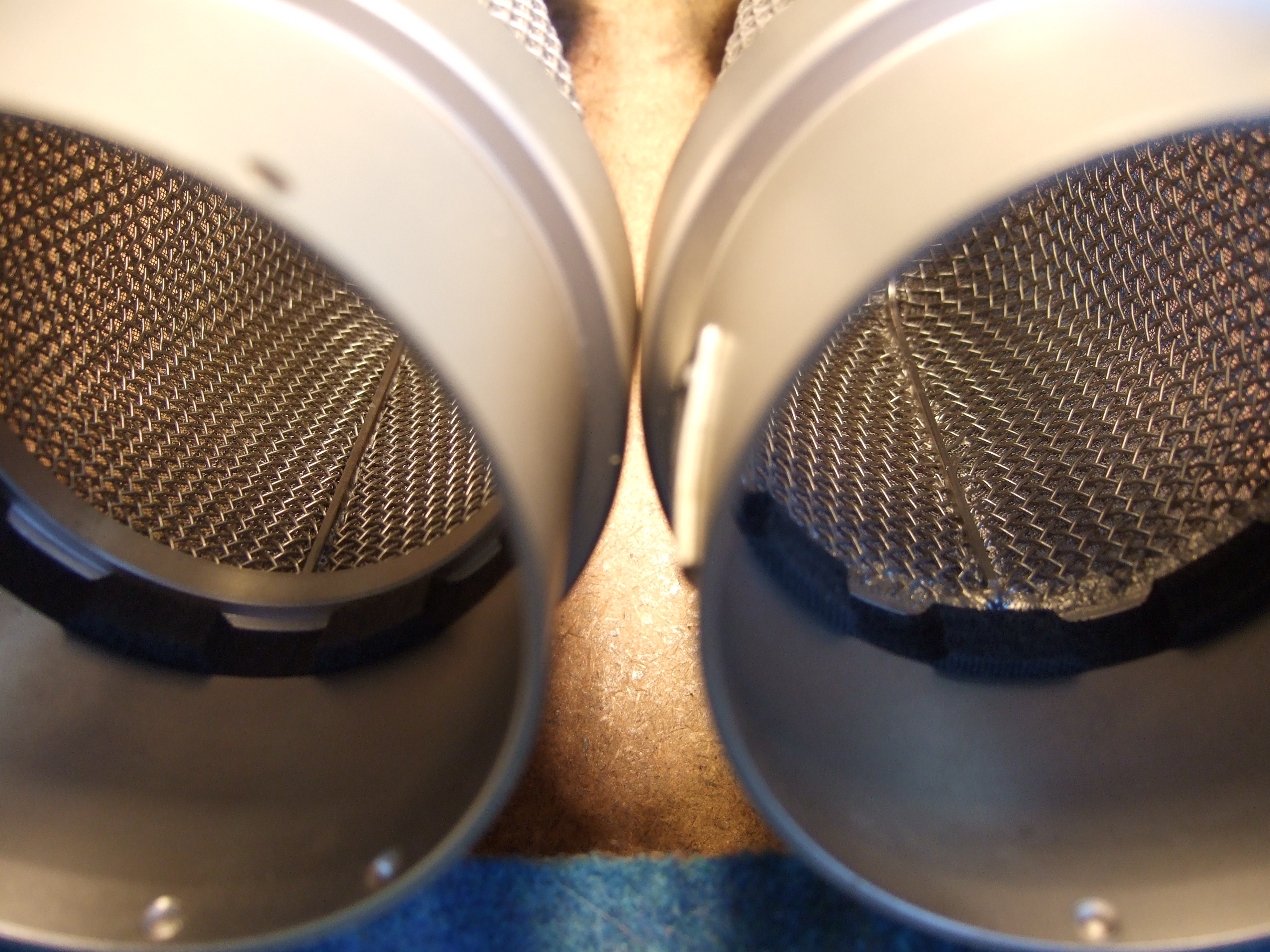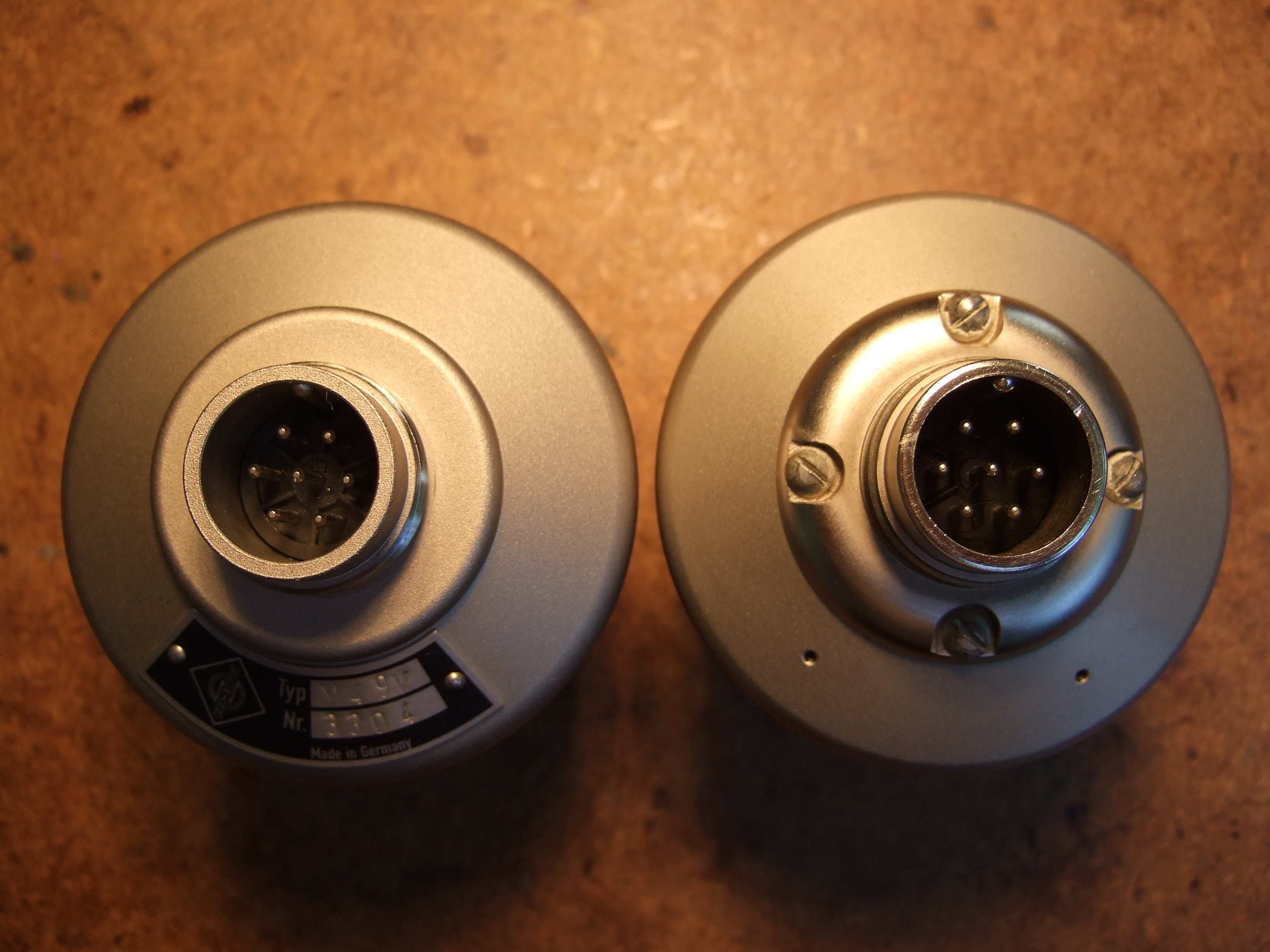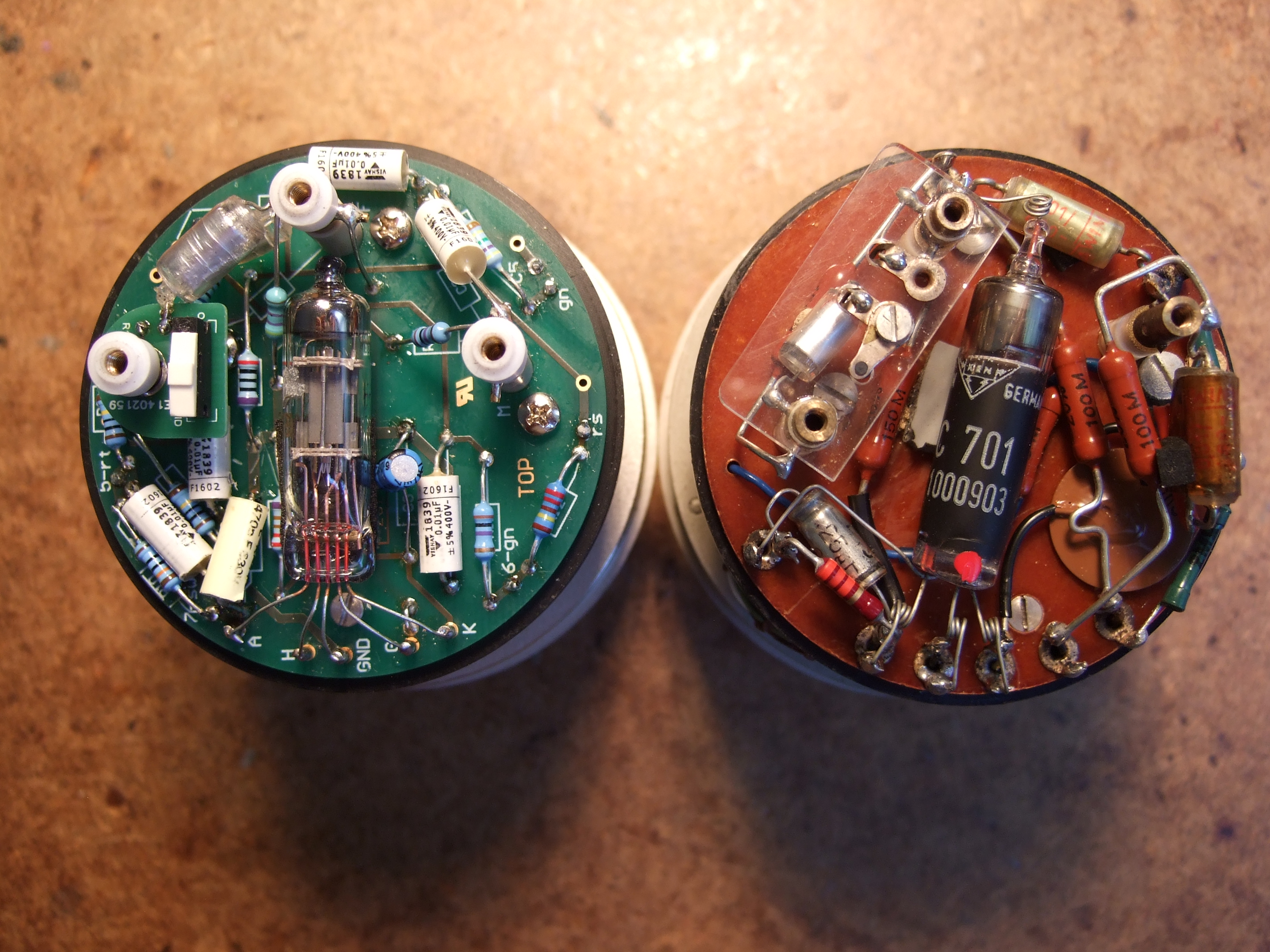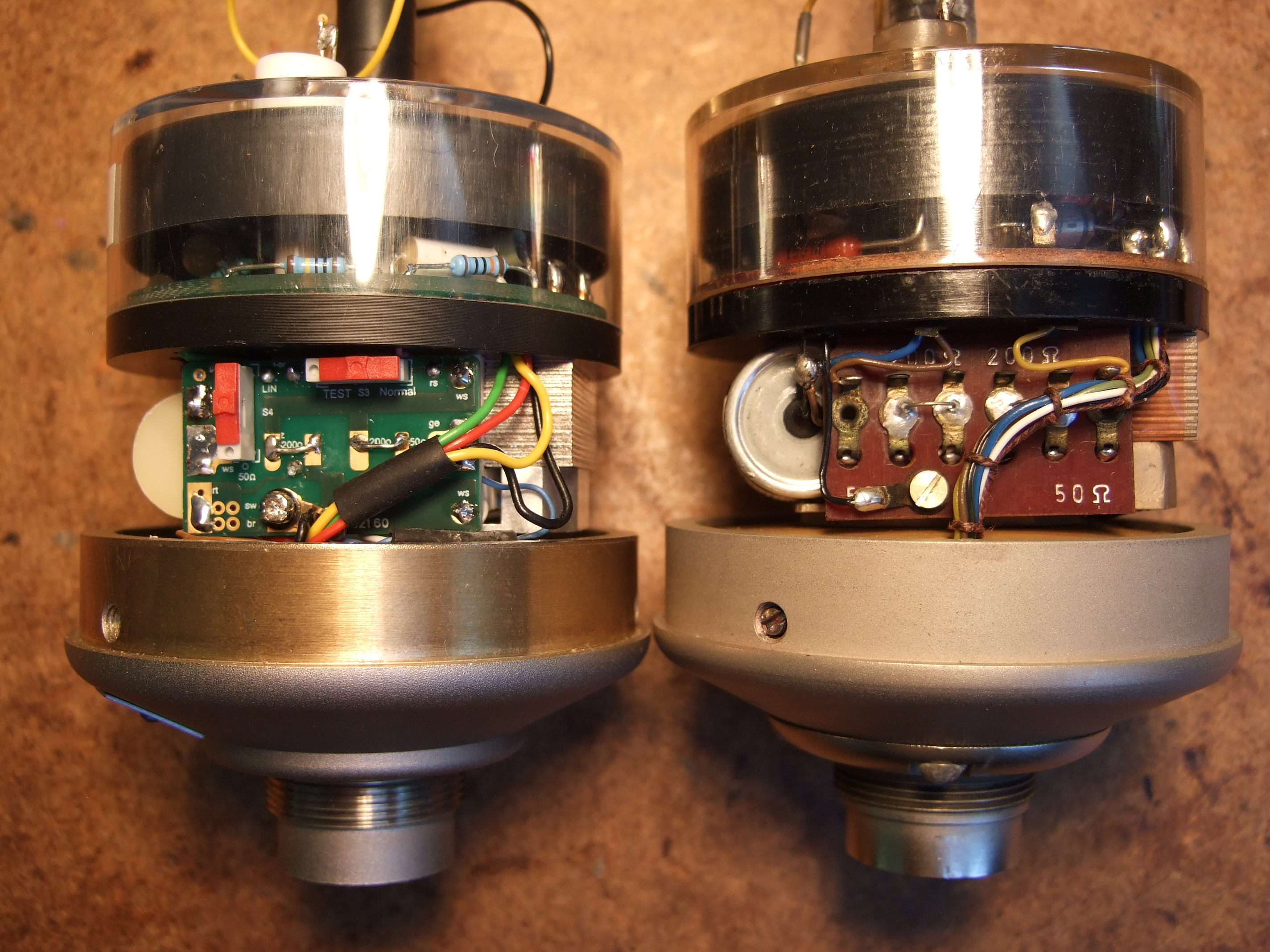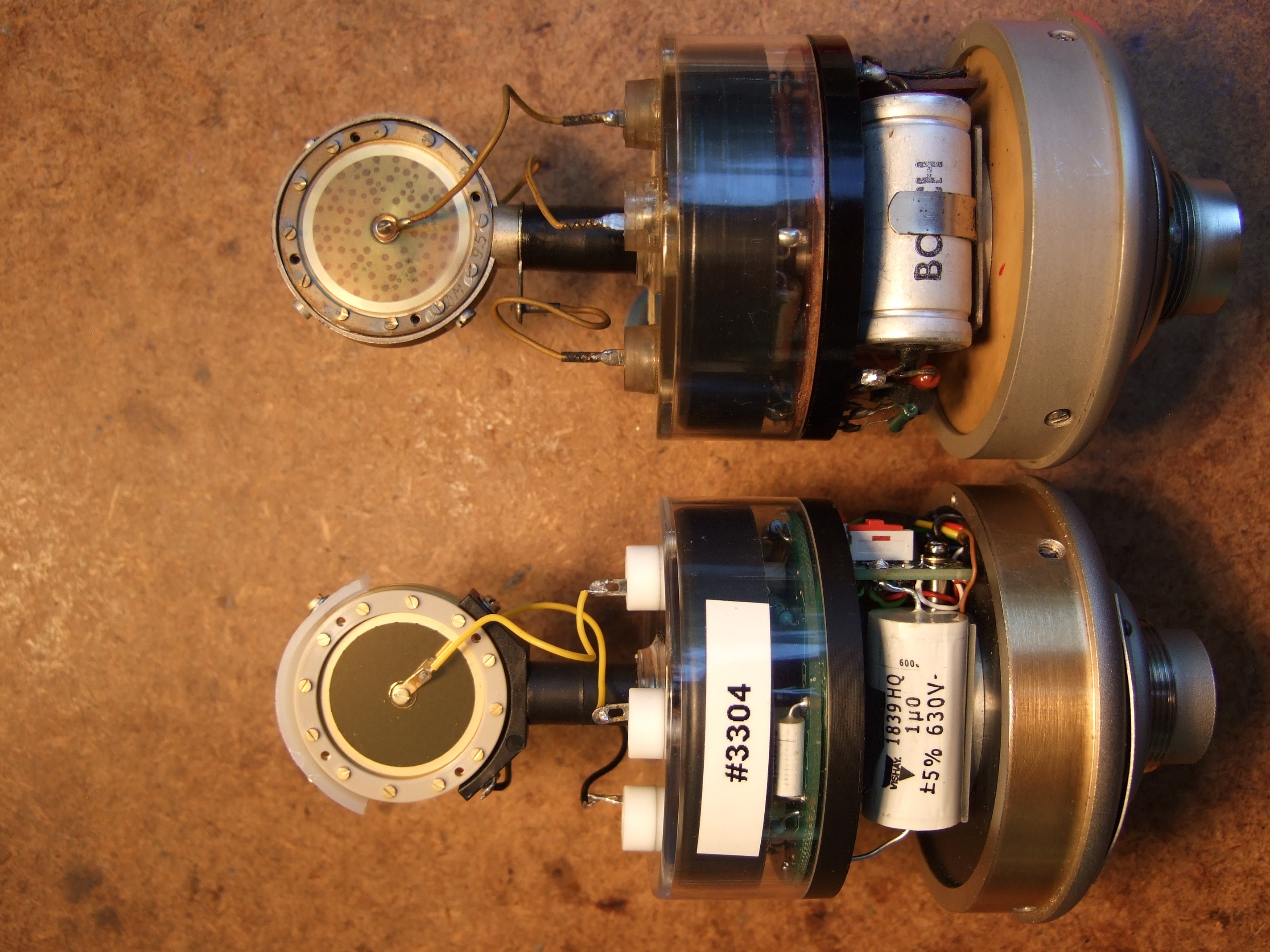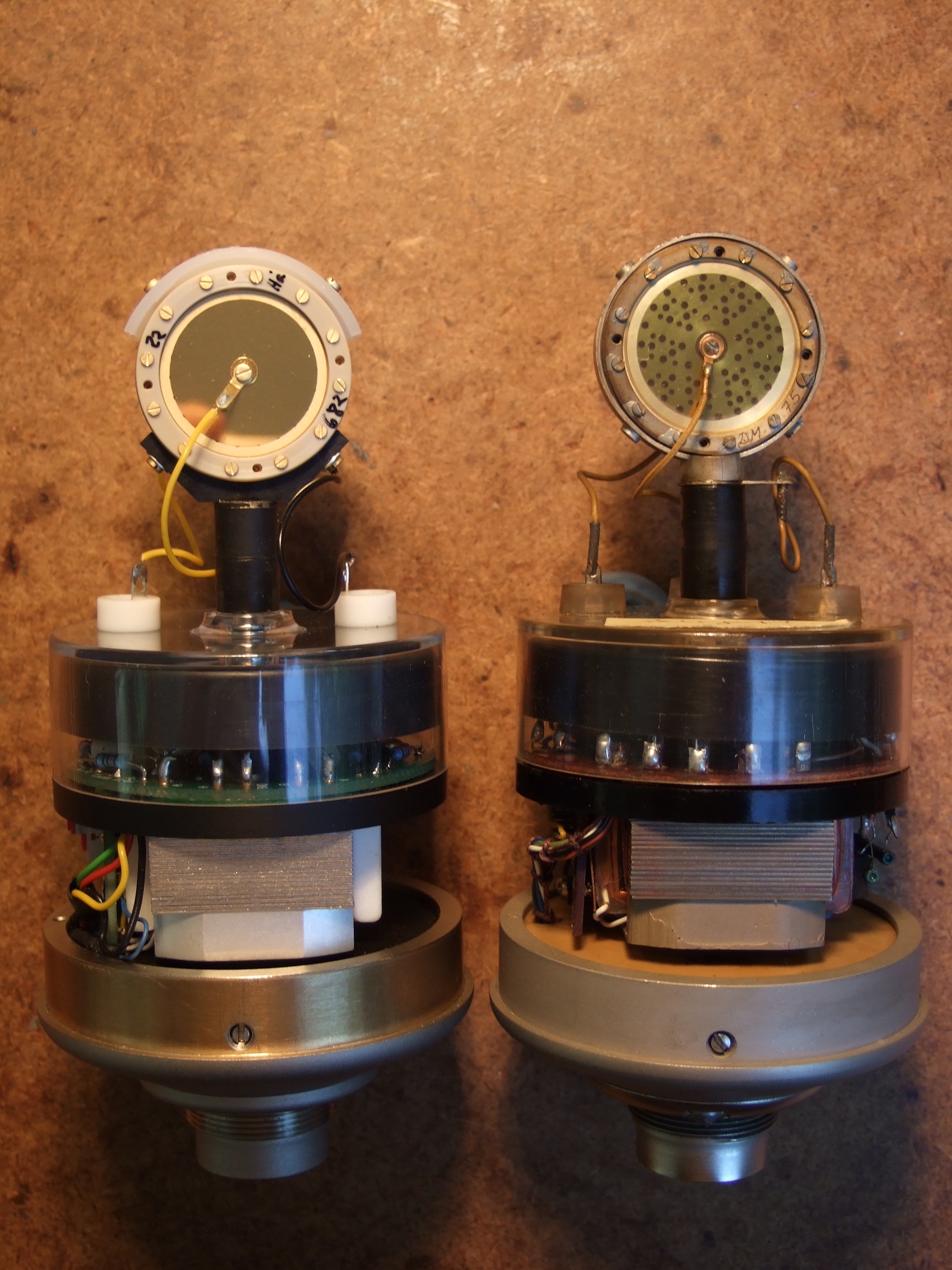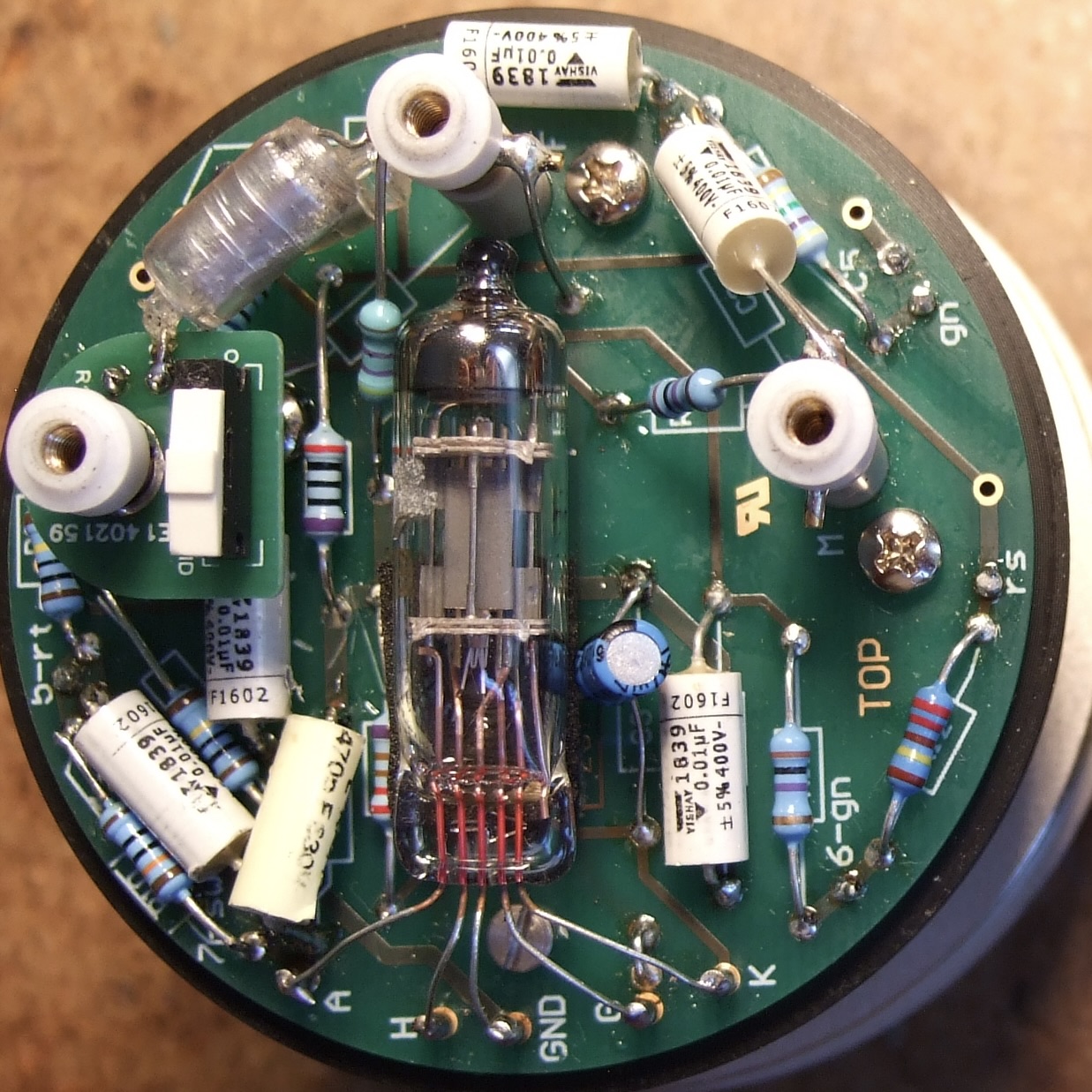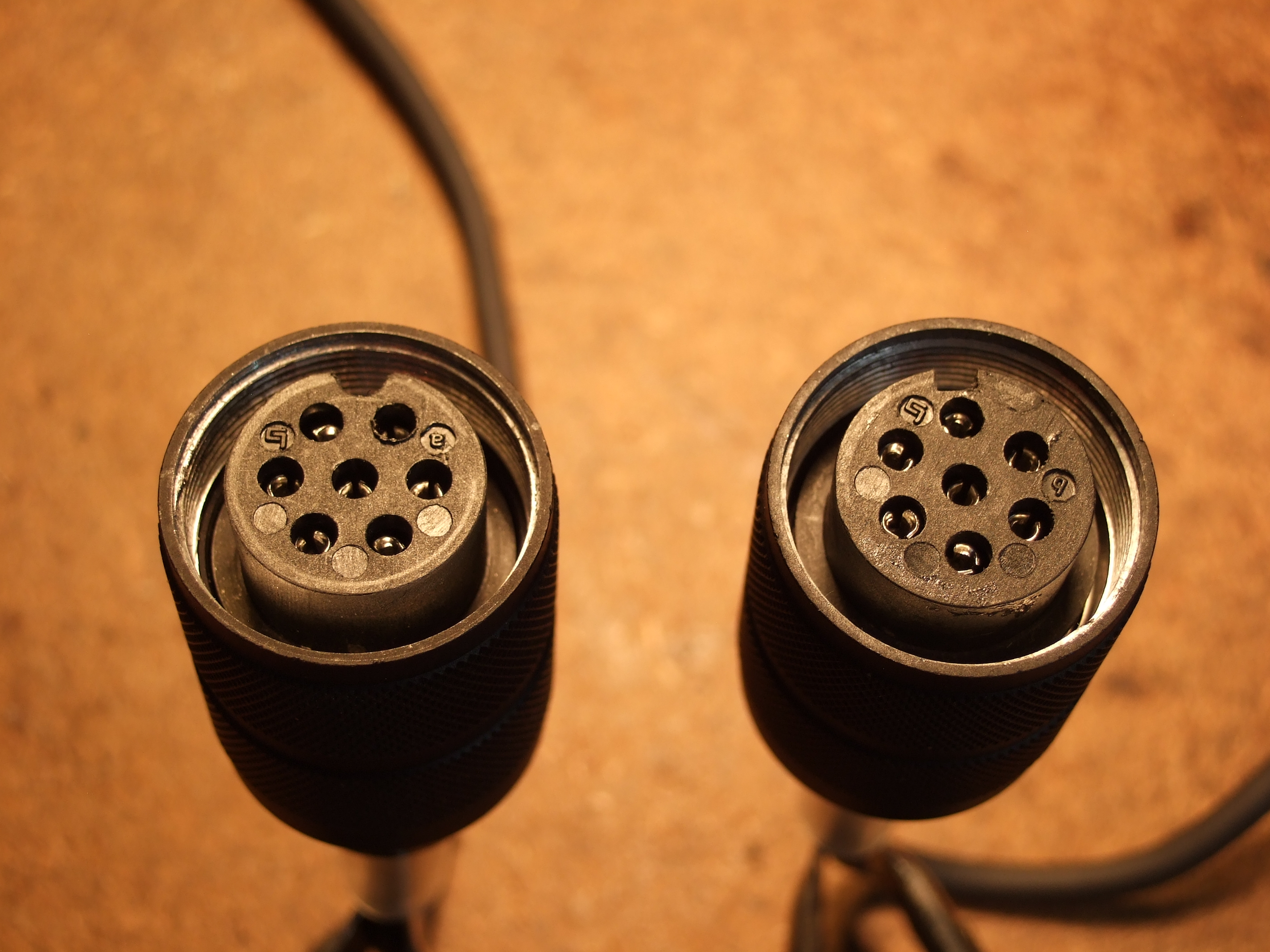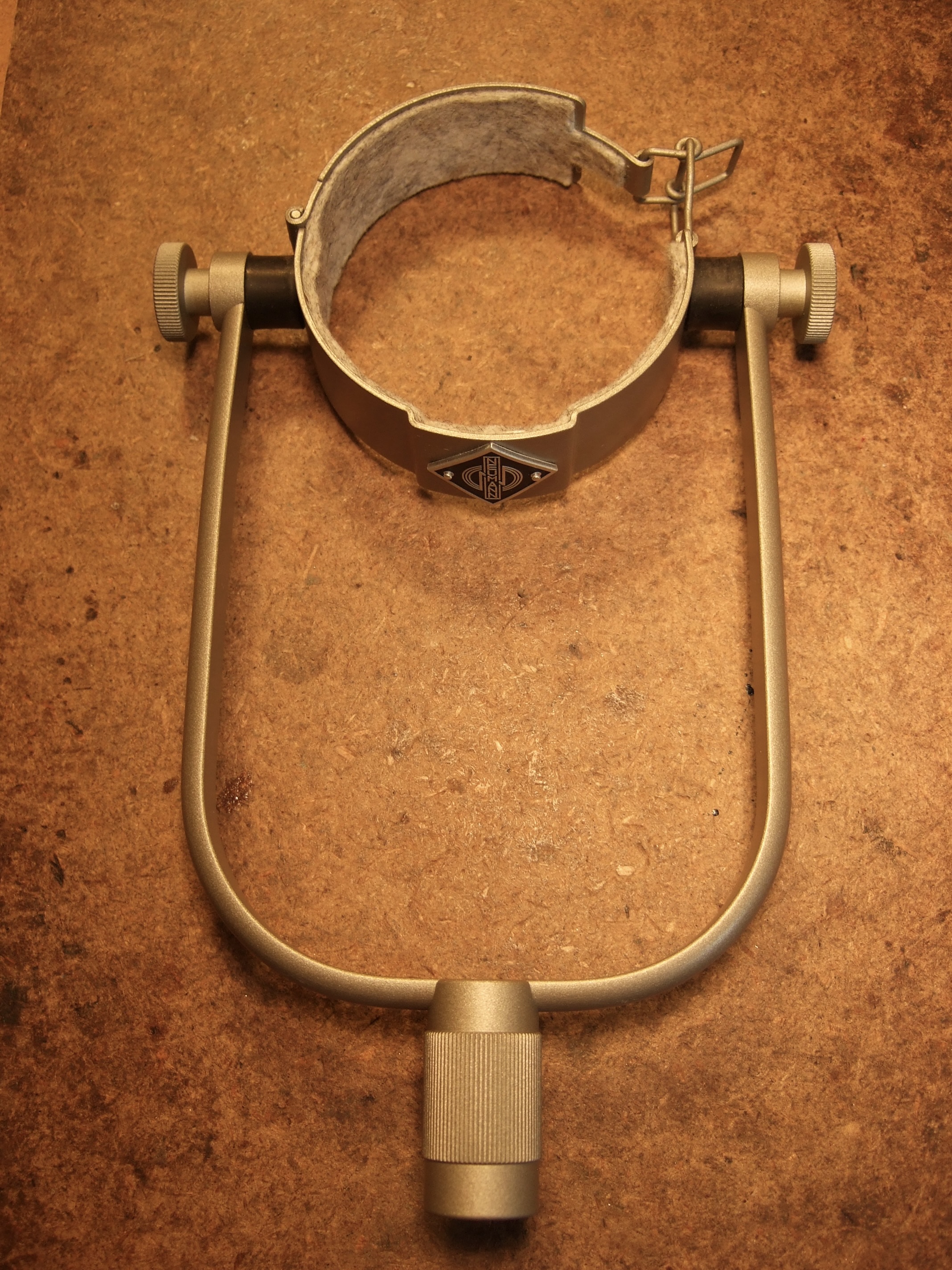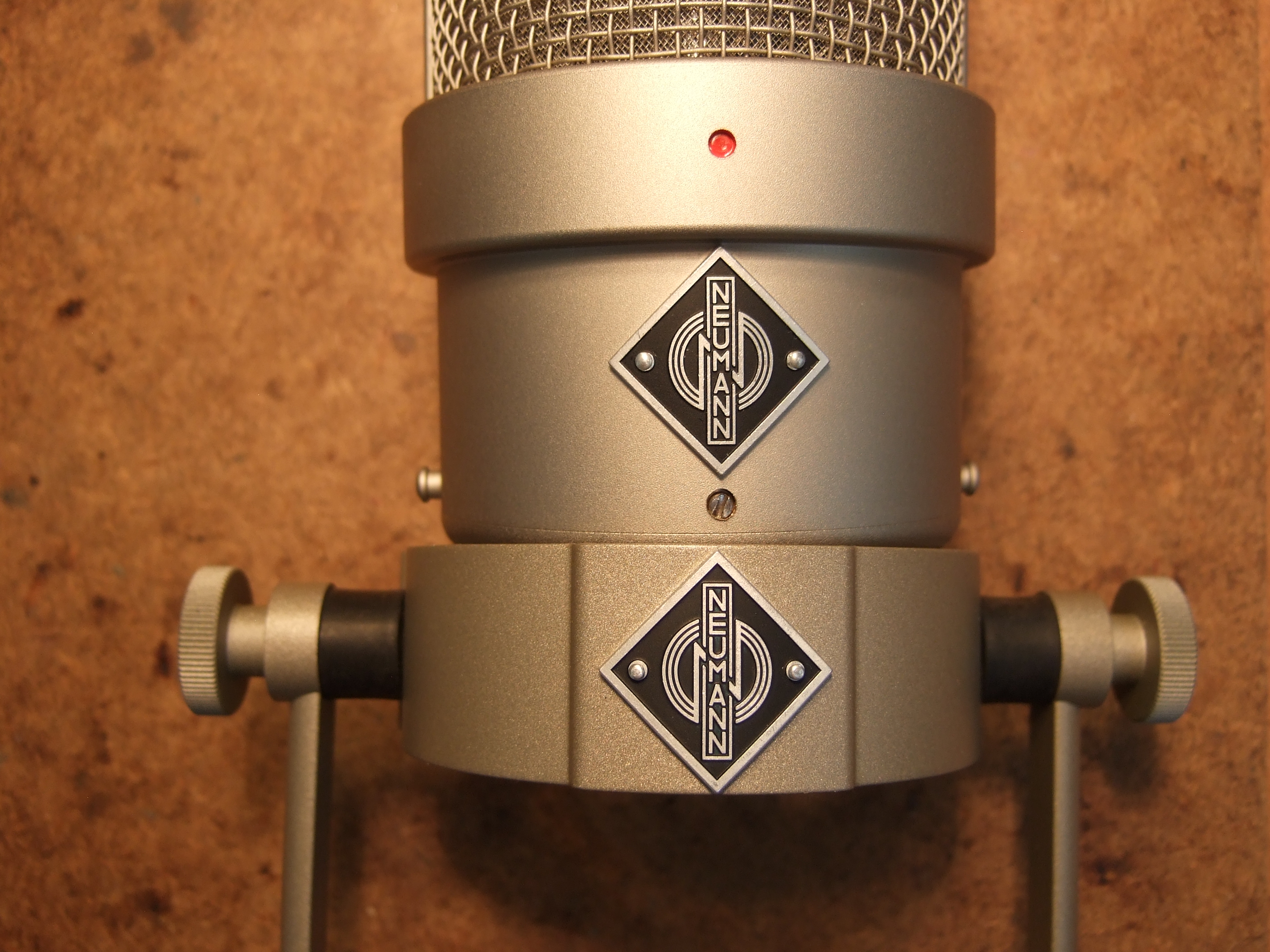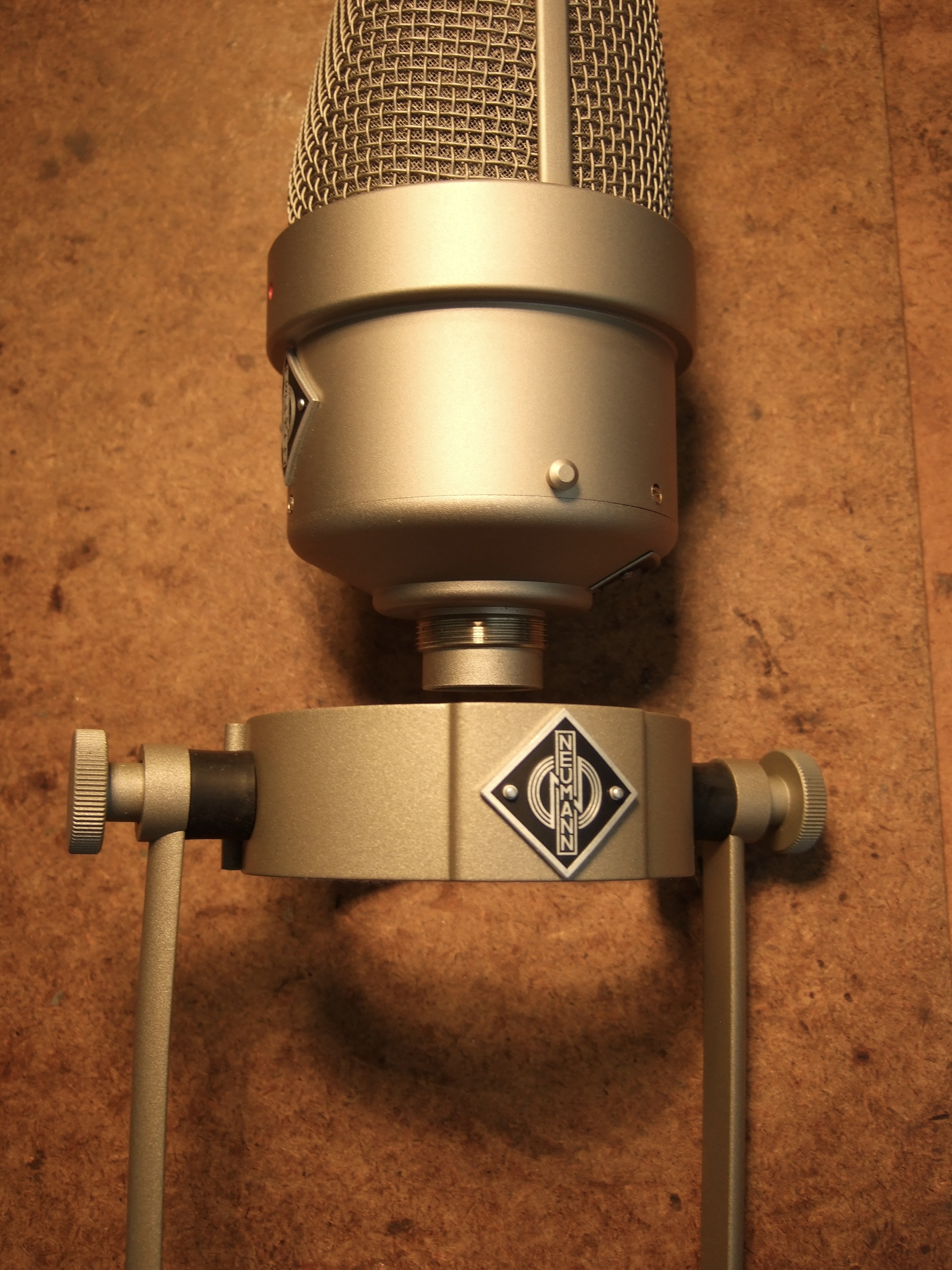Neumann M49V: Complete Tear Down and Analysis
When Neumann asked me in the spring of 2021 to give input on a new model the company was planning to launch, reissuing the M49 was probably the last thing I would have guessed: unlike with the rebirth of the U67, no parts could be borrowed from any of Neumann’s current production models to defray the cost or speed up the development process.
As the third of Neumann’s reissues in recent years, why not focus on an easier target than trying to recreate one of the Big Five - crowing achievements from a long gone era which, to date, had not been surpassed by any mic made since? Could one imagine a more critical audience or higher expectations than this microphone would face upon launch?
To once more build one of the most iconic of vintage tube mics, circuits had to be redesigned, active and passive electronic components sourced, and housing components manufactured from scratch using historic specimens, drawings and other supporting documents from as long as seventy years ago.
But Martin Schneider and his team in Berlin put in the hours, poured over dimensional drawings yellowed and faded with the years, and went to work undeterred. What follows is my take of the outcome.
Visual inspection
Photo:© Klaus Heyne, 2022
Can you spot the difference which of these is the original and which the Reissue?*
The following photos capture much of what Neumann has accomplished in reviving the mysterious, odd beauty of the M49**: housing components were duplicated with dimensional accuracy and perfect fit and finish, all the way down to meticulous recreation of the original basket wire gauges and weave pattern, with a sharp eye on maintaining straight wire mesh lines during assembly, aided by clean, accurate solder joints without overflow slop; a bead blast grain was chosen that gives the surfaces just the right amount of sheen to not offend the senses but to pull you in; and on and on.
Photo:© Klaus Heyne, 2022
In a word: perfection, and 100% interchangeability with all housing parts of the vintage M249.
What the photos cannot show: the heft. This mic weighs a ton and is every ounce as heavy as its predecessor. (Yes, it matters: weight dampens resonances and significantly contributes to the M49’s signature sound.)
*On all pictures with two items, the Reissue is always shown on the left. || Click on any picture to enlarge it
**To be precise: the Reissue is of the M249. Like its predecessor, it uses the screw-on, RF-tight “Type 2” connector used exclusively by the German Broadcast Institute, starting in the late 1950s.)
Of note here: the connector housing/bottom bell, previously a complicated, multi-part construction to accommodate M49 bayonet and M249 screw-on connector versions, is now made of one piece, therefore only compatible with M2xx connectors.
Photo:© Klaus Heyne, 2022
The Amplifier
Which M49 amplifier version to choose for the Reissue?
Not counting transitions, there were six.
I have compiled the history of the M49 and its developmental evolution through the years here .
Each version had something special, one had a sexy-sounding (but noisier) transformer, another superior specs, others came with this capsule switch or that system of fixed low cut, only for the experienced user to understand, accept or modify.
Neumann chose wisely by combining in the M49V the best features from different M49 versions, giving the user the widest variety of options, no matter the initial setup chosen at the factory.
This is a perfect moment in my M49V analysis to point out something that, in my perception, has changed at Neumann in the recent past - a monumental change for the better, in my view.
I received M49V #3304 in March of 2022 - then still in its prototype stage - and was asked to give feedback. Among other things I suggested to add two switches: one for “cardioid only” operation (improving the s/n by 4dB, and providing better cardioid focus), and a switch to bypass the fixed low cut that was added in the late 1950s, which introduced too much phase shift (not only to my ears), smearing way up into the midrange.
Neumann’s development team listened, and incorporated these switches into the series.
Why is this remarkable? Because the company’s new management now pays more attention than ever to the sensual quality and emotional impact its premium mics have on its users - the elusive quality of a mic beyond the sum of what can be measured, what can only be experienced through listening. The quality that, after all, made the company the leader, serving those in the recording community who choose and embrace a mic primarily or exclusively through right-brain listening. Put another way: engineering in service to aural beauty.
The M49V is by far the clearest indication of how Neumann now pays attention to that audience. Here is a microphone made entirely for the senses, unreachable in its emotional impact by the competition, ready to prove that point from the moment you hear the first note, sublime and enticing in its representation of the reality it picks up (more on the mic’s spectacular sound later).
So how about them new switches? The white switch (S2) mounted on the left side of the top board activates fixed cardioid or remote pattern control via power supply.
Photo:© Klaus Heyne, 2022
Then there are two switches on the side board: S4, the left, vertical one selects between linear bass reproduction, with a response flat down to the low teens (switch in the up position), and an audible low frequency cut (down position). The S3, the horizontal switch next to it, should be set to the right (“normal”, it's for factory-internal purposes only).
Photo:© Klaus Heyne, 2022
I asked Neumann’s product manager whether opening the mic to change the switch settings the mic initially came with would void the warranty? He responded that, as long as no damage is done to any of the mic’s components while doing so (the fragile, unprotected capsule is an issue here), owners are ok to do so, and the factory warranty remains intact. As of this writing, the mics will not be sealed for warranty purposes.
M49V component layout and circuitry is identical to the vintage M49c (1964 and up) , which also had printed, rather than wired, circuit connections. Notice that the M249b/c amp on the right still is the wired version which predates the M49c by a few months, but is otherwise identical in all aspects of the circuit.
As with most versions of the original M49, Neumann secured free-standing components from vibrating, preventing resonances bleeding into the audio. A film + foil coupling capacitor was added per my suggestion and will be part of the serial product. It is quite an improvement over the low-res 20-cent specimen found in the prototype - yet another instance of Neumann’s flexibility and openness to finding a better solution, even when it costs quite a bit more.
Photo:© Klaus Heyne, 2022
I was assured by Martin that the transformer is identical in its specifications to the original BV11. It certainly looks the part (more on the sound later).
Photo:© Klaus Heyne, 2022
The Tube
One of the most sensitive aspects of a manufacturer's claim that an expensive tube mic was faithfully reissued is the choice of tube. No internet discussion of this rumored mic launch was more heated and opinionated: how can an M49 be called an M49 without an AC701?
In my mind, it can, but only if two criteria are met:
1. It has to sound identical.
I made the test. I took out the new tube***, installed it in the vintage M249b/c with identical circuit, using the new NM V supply ; then I installed an AC701 in the M49V (pictured below), and again connected the mic to the NM V. Aside of one necessary step critical in the M49V conversion from new tube to old, the circuitry that powers the tube is identical in both vintage and new M49 versions.
After the tube swaps I could not measure any noise difference and could barely detect a difference in the mics’ timbres. An ever so slight (underlined!) mid-range hardness of the new tube completely disappeared when S4 was opened (up). I speculate that the difference has to do with the tube's sensitivity to slight changes in input impedance introduced by the negative feedback when S4 is closed (down).
Maybe Neumann overstated the new tube’s noise floor a bit in its sales literature though the one installed in the prototype was indeed 2dB quieter than one of my well-selected AC701). The tube in the M49V production model I tested measured a similar noise level as a Neumann-selected AC701: ± 0dB. That means, the new tube remains among the quietest tubes Neumann has ever offered.
Does the significant sonic contribution a specific tube makes to the character of some high-end mics apply equally to the engine that powers the M49/M49V?
My experience with any of the AC701-powered Neumann, AKG and Schoeps mics has been that this triode never was much of a “sound machine” in the first place. I find the AC701 to be about the most neutral of tubes I have encountered, with a timbre that is subtle to non-detectable, and with a dynamic behavior different from that of the triode-wired EF86 and VF14 pentodes. With these two, tube timbre plays a vital role in the signature sounds of the U67****, and especially the U47, whose reissue, to my mind, would be unthinkable with any other tube than a VF14.
****I refer you to the passage in my U67 Reissue review where I pointed out the improvement that can be heard by substituting the mediocre New Sensor EF86 with the “right” kind of NOS EF86.
The significant contribution of the tube type to the sound of the aforementioned vintage models was not found here. The new tube used in the M49V exhibits speed, low-mid robustness, complete lack of upper-mid congestion, and has superb transparency without veering into sterility. With other words, the unobtrusive, light touch the AC701 is famous for, remains present in its successor. Or, put even more simply, this tube translates the glorious synergy of K49 capsule and BV11 transformer fully intact, without audible compromise.
But there will be M49V owners who sit on a stash of AC701 or a substantive stash of cash, who have a deep desire to worship at the altar of 110% authenticity for this Reissue; and voila - Neumann thought of these aficionados too: the M49V system is smartly designed to accept an AC701 change-over, as long as it’s done by a competent technician familiar with the process details and the fragility of these tubes (study heat-sinking!).
Photo:© Klaus Heyne, 2022
After the AC701 conversion (see above) I gingerly turned on the new supply to test its intelligence, and ...boom! the supply stopped ramping up the heater voltage at exactly 4.01VDC. Translation: caveat emptor, but there is little chance damaging a four-figure tube when using this smart supply.
Photo:© Klaus Heyne, 2022
***Though the tube in my prototype specimen in March looked similar to a 6S6B, a Russian military type, it was not a 6S6B (Neumann did not fully rub out the label, so I could clearly identify it). That tube was changed out on the mic's second trip to Oregon. As the i.d. on the new tube was completely removed, I cannot confirm whether it’s the same or a different type that will be used in the serial M49V (see above).
I am generally not a friend of “proprietary information” games played by manufacturers. They only encourage sleuths with time on their hands to look harder what's behind the curtain. But here I agree with Neumann to keep the tube type they chose confidential: if it’s an obsolete type, and were it made public, it would be hoarded, installed in copy mics, or syphoned off the market as investment. Neither activity would be in service to the manufacturer to secure a significant quantity of low-noise selected specimens for future M49V owners.
2. A replacement has to comply with the same noise specs and reach similar longevity as the AC701.
I already mentioned s/n comparisons between new an old tube: no difference. But when I received the prototype, I admit, I wanted the new tube to fail, because, remember: it was NOT an AC701! So I left the mic on for ten days straight. I will show you! You, obsolete replacement tube, will fail, you will start to fry and crackle, and that will be the end of that “Reissue” experiment disrespecting the AC701! But, it did not happen, the tube kept humming along. So I went to Trick No. 2: lots of fast on-and-off on the power supply - shock the beast, that will bring her to her knees! Nothing. End of story.
The Capsule
My dissatisfaction with the low-end response of recent K47/49/67/870 capsules (all use the same diaphragms) is well known, and, to Neumann’s credit, they have not thrown me to the wolves yet, but are taking the issue seriously, and are working on investigating and (I hope) solving the problem once and for all.
Curiously, the prototype in March, again, had that dreaded bass-shy behavior of the capsule (see my detailed comments in the U67 Reissue analysis) so I did what I have done for a lot of customers in recent years: I relaxed the diaphragms, restoring the K49 to what, in my experience, is the perfect vintage spec version, with plenty of low-mid authority-the Streisand treatment. Then I boldly sent it back to Neumann.
Guess what: a new capsule was installed in the series-ready version, and it is 99% perfect. Its sound was not only effortlessly reaching the sensuality that the off-shore competition would kill to steal, but the K49 in my M49V sample elevated the mic’s sound right to that elusive terrain occupied by the most relaxed among the vintage Big Five: the famous M49 signature quality was fully present, especially with S4 switched to “linear” position.
Accessories
Those familiar with the U67 Reissue will recognize the cable: it is identical for the M49V, except the Binder connectors do not need the U67’s 30º offset for the guide slot (left connector = M49V, right = U67RI). This prevents to plug either mic into the wrong supply by mistake. As with the U67 Reissue cable, RF performance is stellar and sonics are decent.
Photo:© Klaus Heyne, 2022
The new NM V power supply for the M49V can be used without modification with vintage M49 and other AC701-powered Neumann M2xx mics as well. It uses the same housing as the NU67Vthat powers U67, but circuitry is completely different.
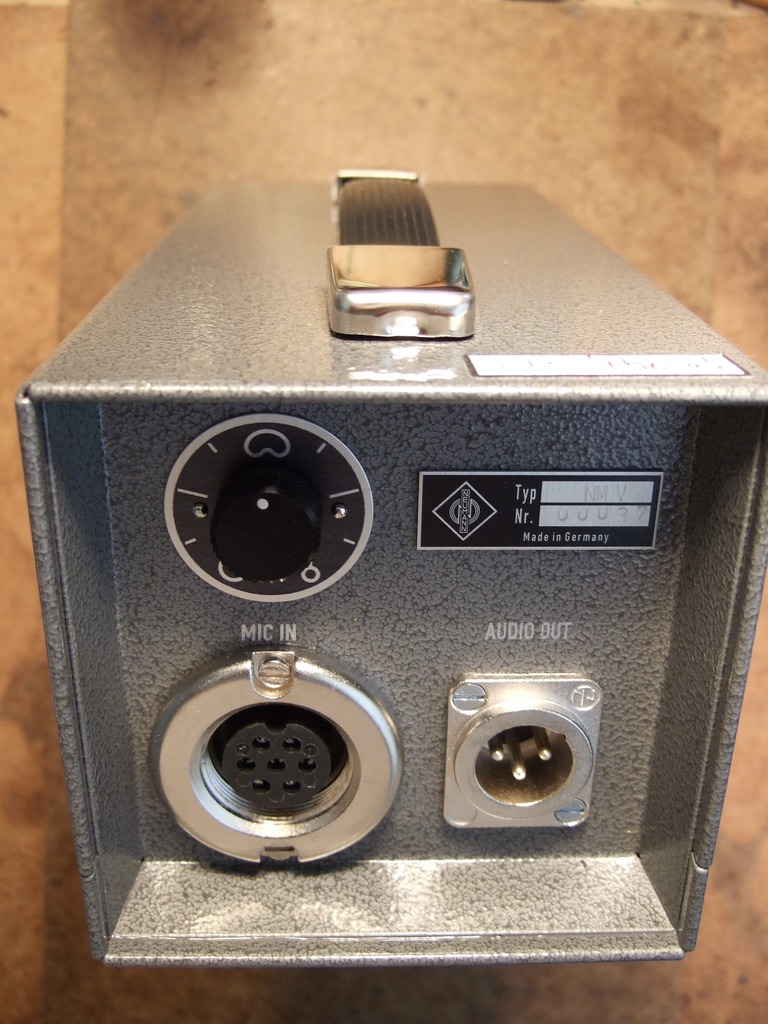
Photo:© Klaus Heyne, 2022
Like the NU67V, the NM V is of the self-adjusting type; it automatically adjusts and holds the correct heater and B+ voltages. Even when the tube’s internal resistance or current draw change with specimen, age, or model, the supply keeps voltages at the ideal settings. This includes powering the M49V with an AC701. Here, a small change is required on the mic amp, but no adjustments will be necessary in the supply.
The M49 horseshoe mount is regarded as one of the most esthetic microphone accessories ever designed (who could forget iconic black and white shots of Columbia sessions?) The new version is finally also a fully functional one: unlike the vintage horseshoe with its great looks but zero shock dampening, the new one has sound deadening rubber cylinders installed between horseshoe and felt-lined Spannring (the metal band that makes contact with the mic body), thus largely stopping transfer of floor and other extraneous vibrations.
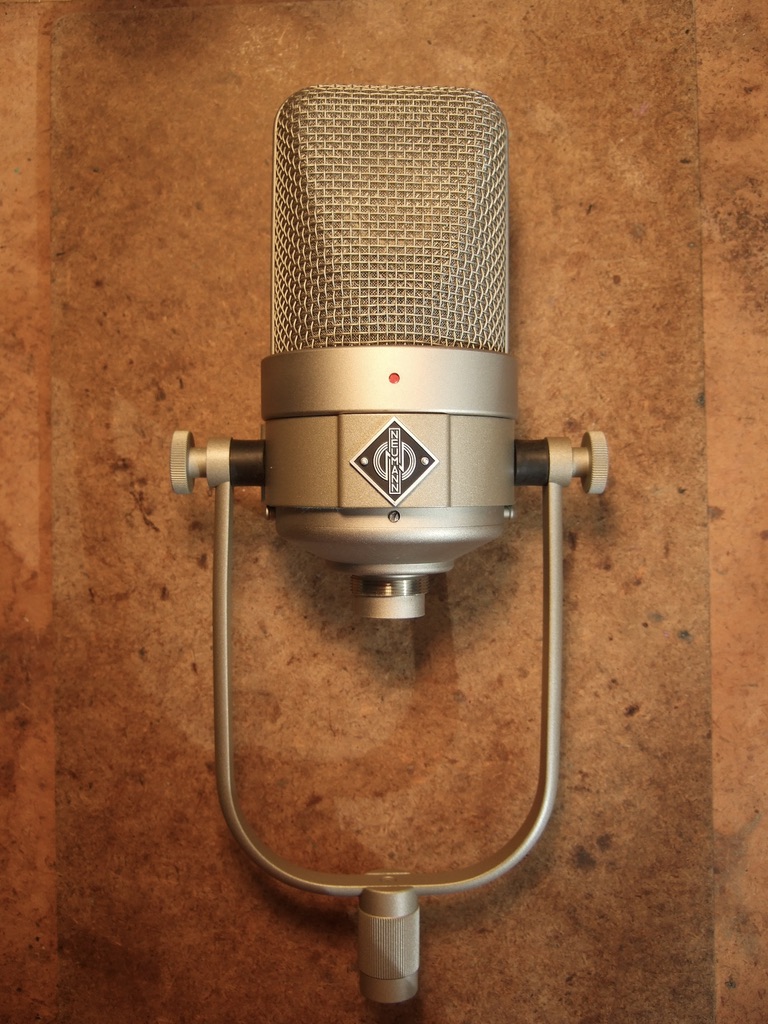
Photo:© Klaus Heyne, 2022
The few vintage originals that featured a rectangular recess to accommodate M49 with Neumann badge were a pain: the badge would scratch as soon as the thin felt layer would wear down. The new recess is deeper and thus badge-safe.
Photo:© Klaus Heyne, 2022
One can argue the esthetics of adding a second Neumann diamond right over that on the mic. But, considering that there are ever more M49 copies spilling onto the market, a Neumann badge on the mount is an easy way to identify the brand from a distance.
Photo:© Klaus Heyne, 2022
Remember to turn the mic against the Spannring 90º during installation (with the ring’s clamp open!). That’s the only way the two nipples on the side of the mic will clear the ring (see photo below of starting position).
Photo:© Klaus Heyne, 2022
That should really do it for the horseshoe. On to the most important bit.
The Sound
So, how can I describe what elevates the M49, and now the M49V, to the top floor, where the Big Five hang out and smoke their heavy cigars, entirely undisturbed by all comers, new and old? And what makes one of them sound so uniquely different from the other four?
Maybe a comparison with the U47 is in order here, as both mics use the same capsule.
I think of the U47 as a boisterous, ostentatious actor using grand gestures; a bit over the top, maybe, but capable of instantaneous arousal of its audience. In comparison, the M49 possesses filigree and refinement, it convinces through subtlety - the more you hear, the more you are drawn in, almost subconsciously. What this mic presents to the ears is underhanded and undramatic, yet it entices the senses like no other.
The M49V's resolution is so high (K49 + tube + enormous transformer + virtually no extraneous and unnecessary processing of the signal) that it breaks through to that elusive terrain we call musicality; not a facsimile of reality - no mic can reproduce reality - but a euphemistic approximation, an interpretation of reality that makes the listener feel good, like very few mics ever could, and, aside of this one, none that is currently made can.
(For the ultimate approximation to a very good specimen of the vintage M49 I recommend to keep the low-cut switch S4 in the M49V in the linear (up) position: when negative feedback is disconnected, the new tube breathes freely and performs optimally, just like an AC701.
Summary
Of the three vintage mics Neumann has reissued so far, the M49V is clearly the crowing achievement - a mic of highest build quality, with painstaking attention paid to reproducing even minute component and circuit details of the original. And where that was logistically not possible (tube) a substitution was found that, at least to my ears and against my initial skepticism, won me over.
If Neumann can continue to pay close attention to selecting frequency-balanced K49, then the M49V will the story of the rebirth of a microphone whose sum of its parts conspired to the rarest of feats: a sound indistinguishable from that of a very good vintage specimen and, the ultimate compliment, a sound supremely iconic and enticing.
All Images © Klaus Heyne, 2022
Materials on this webpage may be freely copied and distributed as long as copyright notice (© Klaus Heyne) and webpage address is included.
